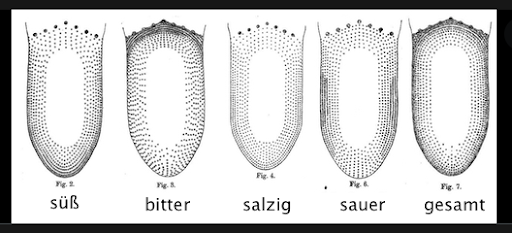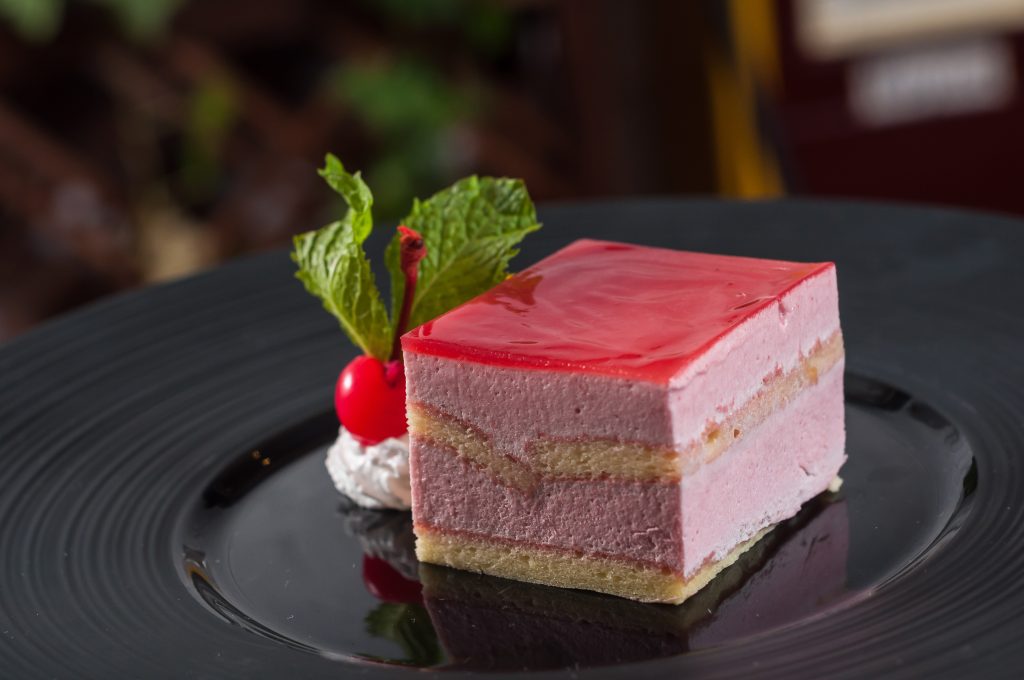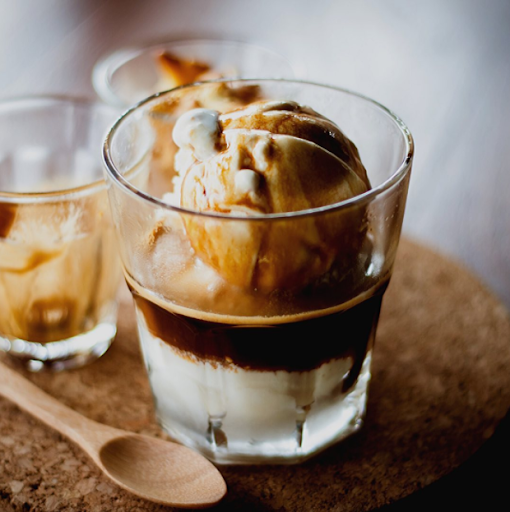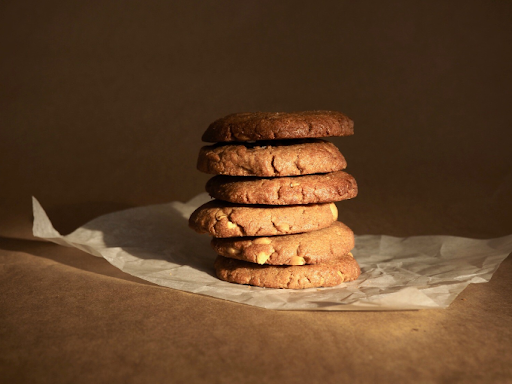How Do Tongue Maps Affect The Taste of Desserts? Myth Busted!
Tongues, we all have them, but what do you really know about them? Where does taste come from? Explore tongue maps and myth busted fun facts about our sense of taste!
How Does the Tongue Work?
When we are eating our favourite dessert, there are taste receptors on the tongue reacting to various chemical stimuli. These receptors send signals to our brain, decoding the types of flavours we are tasting. Our perception of taste is extremely intuitive. Our sense of taste is determined by five distinct flavours, including sweet, salty, sour, bitter and umami. Not only can we taste them, we can also smell them! Our sense of smell heavily affects how we taste our food. That is why we are able to taste food through odour! The combination of the two creates what we know as flavour.

Tongue Maps… Myth Busted!
Tongue maps have been around since the early 1900’s. This theory originated from an experiment by German scientist David Pauli Hänig, learning that the tip and sides of the tongue were the most sensitive to taste. Through this discovery, he created a taste map distinguishing the flavours tastes in specific areas of the tongue. However, the graph was more of an artistic rendering, rather than an accurate display of data. It made it appear as though there are different areas for each taste, but that was not entirely correct.

Original Tongue Map by David Pauli Hänig, starting from left: sweet, bitter, salty, sour and overall (Spektrum de SciLogs)
Throughout the years, various studies proved the tongue map to be unreliable. In other words: myth busted! One of these studies was by Virginia Collings (University of Pittsburgh, 1974). She confirmed there is a slight difference between tastes on different areas of the tongue. But if there is, it is not as forecasted before. The tongue is not the only one that has taste receptors. It seems that the cheeks, the roof of the mouth and the throat also have the ability to detect flavours.
Explore the Wide Range of Our Sense of Taste
Sweet
When we think of desserts, the first flavour that comes to mind for many is sweet! After a savoury meal, we somehow still gravitate towards those sweet desserts. No matter how full we get, there is always room for dessert! There might even be unexpected ways to get maximum sweetness on all your desserts.
Did you know that plate colour and shape affects the way you taste the sweetness of desserts? A research about taste perception illustrates the influence of contextual factors (i.e., cutlery, tableware) on how we enjoy desserts. These two variables (plate shape: square or round and colour: black or white) were tested to see the impact on our perception of the dessert we eat. The research found that our perception of how sweet something is depends on how they interact with these factors. For example, their study found that eating strawberry mousse on a round white plate increased the sweetness and intensity of the perception. Whereas when it was served on a square black plate, the liking comments and critics were increased (chefs, bakers… take note!).
Try this experiment yourself with your next sweet treat! We recommend trying: cotton candy, banana split, sweet crepes, doughnuts dipped in icing and jelly beans. See the results yourself!


Strawberry Mousse Cake (Black Plate) vs. Strawberry Mousse Cake (White Plate)
Bitter
The bitter flavour is an underrated taste, especially when it comes to desserts. It is not a flavour we typically want to taste when indulging in desserts like candies, cakes and cookies.
Our body is biologically wired to reject bitter flavours, since poisons and toxins usually have a bitter taste. Young children are particularly sensitive to this flavour, but as we grow older, we become adjusted and can appreciate this neglected taste. Actually, some nutritious foods, such as leafy greens, have a sharp taste, yet we still enjoy them. Even chocolate can taste bitter, depending on the amount of cocoa content, or lack of sugar and milk. Just like the leafy greens, the healthier option can sometimes be a little bitter. Welcome to the bittersweet truth of taste!
Jennifer McLagan, author of the famous cookbook “Bitter: A Taste of the World’s Most Dangerous Flavor” celebrates bitter foods. During her James Beard Award acceptance speech, she stated: “In the kitchen, eschewing bitter is like cooking without salt… without bitterness we lose a way to balance sweetness, and by rejecting it, we limit our range of flavours. Food without bitterness lacks depth and complexity.”
Don’t let your primal instincts get the better of you! Desserts such as affogato, tiramisu, chocolate covered coffee beans, matcha ice cream and dark chocolate all have a distinct bitter taste. And guess what? They taste delicious!

Affogato (Humani-T Café)
Sour
Sour desserts are rising in popularity, especially for those who do not have a sweet tooth. Sour flavours emulate citric elements, giving every bite a refreshing sensation. Coupled with sweet tones, the tanginess balances out the flavours creating a perfect harmony!
A well-known sour dessert is the lemon tart. The acidity of lemon juice and the sweetness of the sugar; what more can you ask? It is neither too sour or too sweet… the best of both worlds! Nowadays, chefs and bakers are opting for sour ingredients to add that acidic punch. Some of these ingredients include lemons, raspberry, green apple, rhubarb, as well as sour cream, yoghurt and balsamic vinegar.
If you feel like you need to cleanse your palate after a heavy meal, check out some of these sour desserts as an after-meal: lemon meringue, tarts and strawberry rhubarb desserts.

Lemon Meringue Pie (Rocket Bakery)
Salty
Another great combination: sweet and salty desserts! In quantities, salt enhances flavour, whether it would be sweet, bitter, sour or umami. That is why in every recipe you find salt as part of the list of ingredients! The addition of salt will take a simple dessert to the next level. Think of salted chocolate; With the right amount, your taste buds will thank you at every bite!
Actually, a study (Proceedings of National Academy of Sciences, 2011) demonstrates that there are sweet receptors on our tongue that are activated only in the presence of salt. So go ahead, do not be afraid to add a little bit of salt in your desserts!
Any food connoisseur knows that salt is often the key to unlock other flavours. If you are looking to try some sweet and salty desserts, we suggest looking for pretzels, salted caramel, salted chocolate and popcorn.

Chocolate and Salted Caramel Cake (Lecavalier Petrone)
Umami
Have you heard of, or tasted, the umami flavour? Umami was added into the basic tastes of the tongue map only in 1985. But it was explored heavily in 1908 by Kikunae Ikeda.
Umami is difficult to explain, but it directly translates from Japanese to “the essence of deliciousness”. It is a mouthwatering taste that coats your tongue. Scientifically, it is the taste of glutamic acid. Glutamic acid is present in many foods and is an amino acid that helps make up proteins.
Monosodium glutamate (MSG – salt produced from glutamic acid) is used to heighten the umami flavours in foods. It is best when added to a savoury dessert, as opposed to sweet desserts, since it does not enhance the sweetness. Another way to intensify umami flavours in a dessert is by including umami ingredients such as seaweed, mushrooms, old cheese, and tomatoes.
Who wouldn’t want to try the “essence of deliciousness”? Umami desserts may scare you, but they are tastier than you think. Give these umami goodies a try: caramel, aged cheeses, maple bacon and peanut butter cookies.

Peanut Butter Cookies (Automne Boulangerie)
We could not talk about the myth busted taste map, without mentioning all flavours on the famous tongue maps. And frankly, the more parts of the tongue that receive these tastes, the better. We hope you enjoyed exploring the sense of taste!




